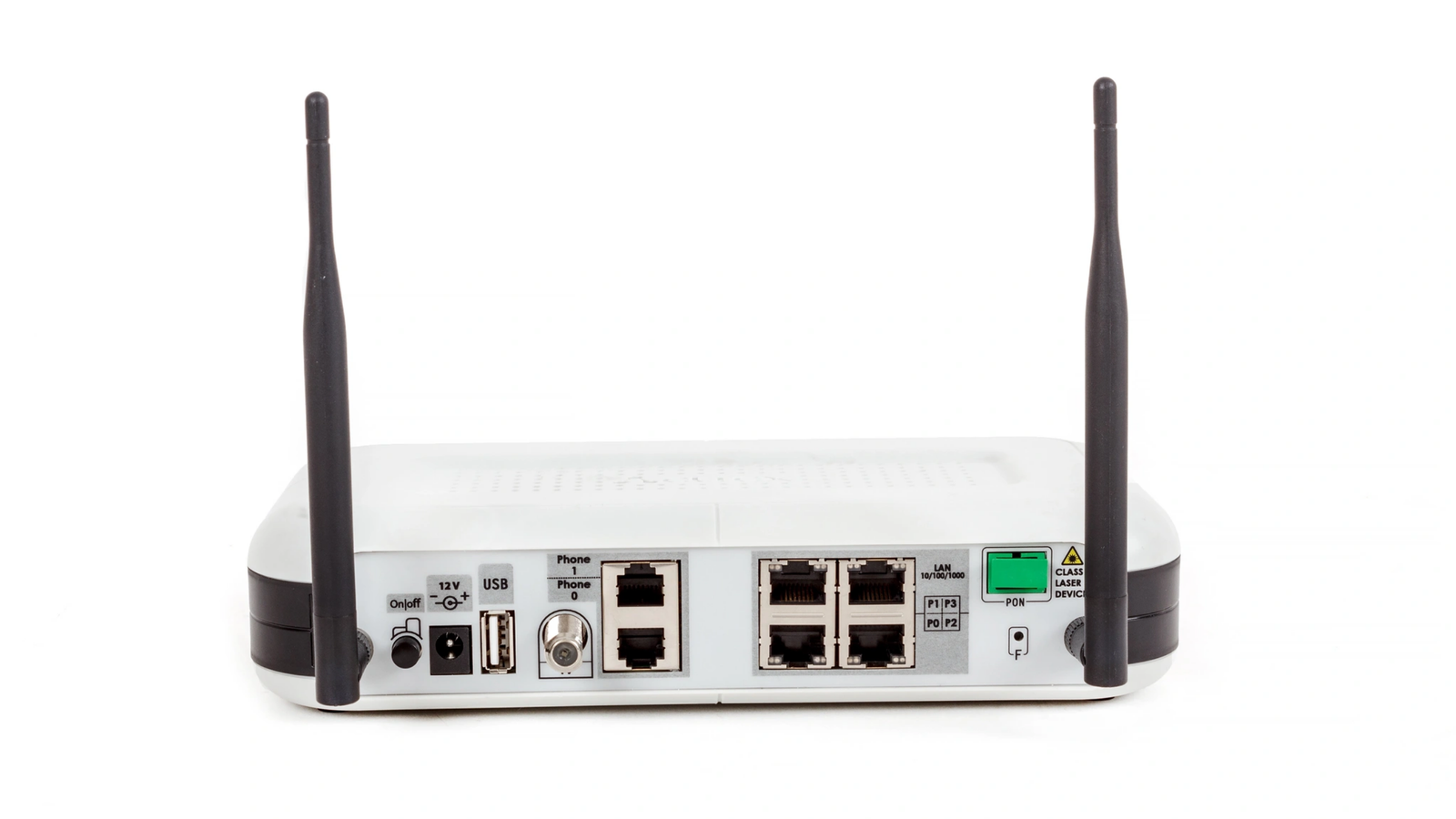Fiber-optic internet delivers blazing-fast speeds, but the devices that bring this connectivity into your home or business can be confusing. Two critical Customer Premises Equipment (CPE) devices—**Optical Network Terminals (ONTs) and routers—play distinct yet complementary roles in your fiber-optic network.
Understanding the differences between ONTs and routers ensures you optimize your internet setup for speed, reliability, and security. Whether you’re a tech enthusiast, a business owner, or just someone looking to maximize their fiber connection, this guide breaks down everything you need to know.
What Is an ONT (Optical Network Terminal)?
An ONT (Optical Network Terminal) is a device that converts the fiber-optic signal from your Internet Service Provider (ISP) into electrical signals that your local network can use. Essentially, it’s the bridge between the fiber-optic line and your internal network.
Key Functions of an ONT:
- Signal Conversion: Translates light-based fiber signals into electrical signals (Ethernet, Wi-Fi, etc.).
- ISP Authentication: Authorizes your connection with the ISP (often requiring credentials like PPPoE).
- Basic Routing (Sometimes): Some ONTs include limited routing functions, but they’re not full-fledged routers.
Where Is the ONT Located?
- Typically installed inside your premises (e.g., wall-mounted or placed near the entry point of the fiber line).
- In some cases, ISPs deploy an Optical Network Unit (ONU) outside (like in FTTH setups), with an ONT inside.
What Is a Router?
A router is a networking device that directs traffic between your local devices (phones, laptops, smart TVs) and the internet. Unlike an ONT, a router doesn’t interact directly with the fiber signal—it works with the data already converted by the ONT.
Key Functions of a Router:
- Network Distribution: Assigns IP addresses (via DHCP) and manages data flow.
- Wi-Fi Connectivity: Provides wireless access (if it’s a wireless router).
- Security Features: Includes firewalls, VPN support, and parental controls.
- Traffic Prioritization: QoS (Quality of Service) settings for better streaming/gaming performance.
Where Is the Router Located?
- Usually placed inside your home/office for optimal Wi-Fi coverage.
- Often connected to the ONT via an Ethernet cable.
ONT vs. Router: Key Differences
| Feature | ONT | Router |
|---|---|---|
| Primary Role | Converts fiber signal to Ethernet | Manages local network traffic |
| ISP Dependency | Provided & configured by ISP | Can be user-purchased & configured |
| Wi-Fi Capability | Rare (unless combo device) | Standard in most modern routers |
| Security Features | Minimal | Advanced (firewall, VPN, etc.) |
| Placement | Near fiber entry point | Central location for best Wi-Fi |
Do You Need Both an ONT and a Router?
- Yes, in most cases. The ONT handles the fiber connection, while the router manages your local network.
- Exception: Some ISPs provide combo ONT/router devices, but these may lack advanced features.
Common Fiber-Optic CPE Setups
1. Separate ONT + Router (Recommended for Power Users)
- Pros: Better performance, flexibility in router choice, enhanced security.
- Cons: Slightly more complex setup.
2. ISP-Provided ONT/Router Combo (Convenient but Limited)
- Pros: Single device, easier for non-tech users.
- Cons: Often lacks customization, weaker Wi-Fi, and fewer features.
3. ONT + Mesh Wi-Fi System (Best for Large Homes)
- Pros: Seamless coverage, high speeds everywhere.
- Cons: Higher cost, multiple devices.
How to Choose the Right Router for Your ONT
If your ISP provides only an ONT, pairing it with a high-performance router ensures optimal speeds and coverage. Consider:
- Wi-Fi 6 Support: For faster wireless speeds.
- Multi-Gig Ethernet Ports: If you have >1Gbps fiber.
- MU-MIMO & Beamforming: Better handling of multiple devices.
- Security Features: Built-in VPN, malware blocking.
Troubleshooting Common Fiber CPE Issues
1. No Internet After ONT Restart
- Check fiber cable connections.
- Wait for the ONT to fully reboot (can take 5-10 mins).
2. Slow Wi-Fi Despite Fast Fiber
- Ensure your router supports your plan’s speed.
- Reduce interference (avoid placing router near microwaves, thick walls).
3. ONT Lights Not Stable
- Solid green = Good. Flashing/red = Issue.
- Contact ISP if the problem persists.
Final Verdict: ONT vs. Router
- ONT = Fiber translator. Necessary for fiber internet.
- Router = Traffic manager. Essential for Wi-Fi and local networking.
For the best experience, use a dedicated ONT + high-end router instead of combo units. This ensures maximum speed, security, and reliability.
